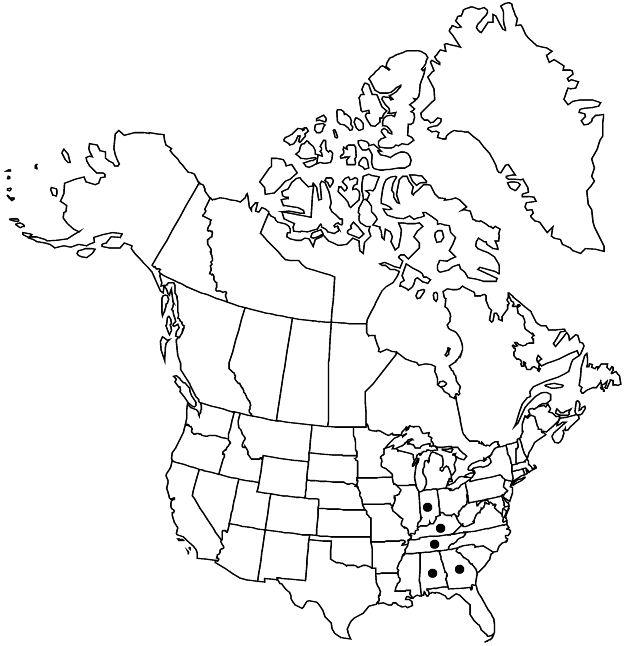Viola egglestonii
Bull. Torrey Bot. Club 37: 526, plates 34, 35. 1910.
Plants perennial, acaulescent, not stoloniferous, 5–20 cm; rhizome thick, fleshy. Leaves basal, 3, prostrate to ascending; stipules linear-lanceolate, margins entire, apex acute; petiole 1.5–7 cm, usually glabrous; earliest leaf blades ± deltate or 3-lobed, mid-season blades 5–9-lobed, 1–9 × 1–10 cm, base truncate to cuneate, middle lobe lanceolate or spatulate to narrowly ovate, lateral lobes lanceolate or spatulate to falcate, margins serrate, sometimes with deltate or falcate appendages or teeth, ciliate, apex acute, surfaces usually glabrous, rarely pubescent. Peduncles 2–15 cm, usually glabrous, rarely pubescent. Flowers: sepals lanceolate to ovate, margins ciliate or eciliate, auricles 0.5–1 mm; petals light to dark blue-violet on both surfaces, lower 3 and sometimes upper 2 white basally, lower 3 darker violet-veined, lateral 2 densely bearded, lowest 10–15 mm, spur usually lilac, gibbous, 2–3 mm; style head beardless; cleistogamous flowers on prostrate peduncles. Capsules ellipsoid, 11–14 mm, glabrous. Seeds beige, mottled to bronze, 2–3 mm. 2n = 54.
Phenology: Flowering Mar–May.
Habitat: Limestone glades and barrens
Elevation: 100–200 m
Distribution

Ala., Ga., Ind., Ky., Tenn.
Discussion
N. H. Russell (1965) was the first to consider Viola egglestonii similar to V. septemloba. After analyzing leaf-blade lobing patterns, L. E. McKinney considered it a subspecies of V. septemloba. Although similarities exist between these taxa, we maintain them as distinct species.
Selected References
None.